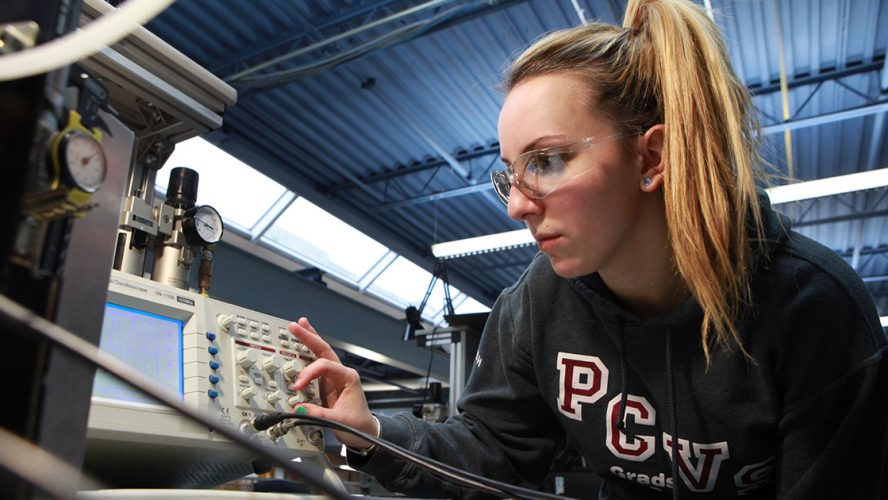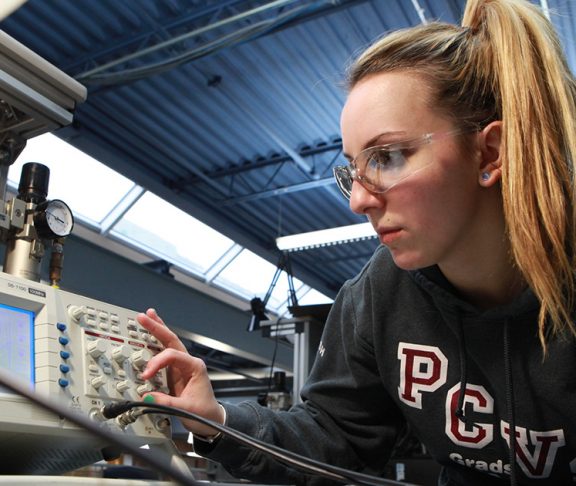When Meghan Emberson first started her career, she chose makeup artistry. Then she helped a friend’s mom install a new kitchen faucet and discovered she had a natural skill when it came to construction.
Though her father owned a company selling plumbing parts and she aced her construction technology course in high school, working in the skilled trades didn’t seem like a viable career option. “Then I looked into it, just to see if plumbing was something I really wanted to do,” says Emberson, who is now completing her apprenticeship through Fleming College in Peterborough. “Once I took the program I realized it was exactly what I wanted to do.”
Breaking stereotypes: not just an ideology
Emberson admits to being nervous at first, knowing that the trades field is one where there’s still a huge gender imbalance. “I had zero confidence and was worried about being a woman in a male-dominated trade,” she says. She was also concerned the faculty might treat her differently. Fortunately, those fears weren’t fruitful.
That’s the whole idea, notes Maxine Mann, dean of Trades and Technology at Fleming College. “The motivation to join the trades is no different across genders,” she says. “It’s a great career choice. There’s work, you have the ability to travel, it’s fulfilling, and you can own your own business and become an entrepreneur.”
More and more women are figuring that out for themselves. Five years ago, only between one and 3% of the students enrolled in Trades and Technology at Fleming College were women. Today, that number stands at 13%.
In effort to keep that percentage growing, the college hosts Women in Trades evenings, where potential students can meet female mentors and hear about their experiences at the school and in the trades. It also partners with regional school boards to introduce young girls to the variety of diploma programs they offer including carpentry, welding, heating and refrigeration, and computer technology.
Creating safe spaces is essential to success
The college atmosphere is intentionally inclusive for all members of the student body. There’s “absolutely zero tolerance” for any racist, sexist or homophobic remarks or behaviour, Mann adds. Much of the faculty are under the age of 45 and teach a more modern way of thinking on campus.
Fleming recently opened its Kawartha Trades and Technology Centre, a $36.6 million, 87,000-square foot training facility for carpentry, welding, plumbing, and electrical at the Sutherland Campus in Peterborough. With natural light and a lounge area, it’s a far cry from the old trades workshops that were often located offsite in dim basements. It was designed with women in mind to be clean, safe, inviting, and functional — in “the KUBE,” a three-storey mock job site, students from various trades work side by side.
“It’s an absolutely gorgeous, state-of-the-art trade facility designed to create a safe space,” Mann says. The centre, combined with innovation focused professors and a new generation of contractors who operate more diverse and progressive job sites, equips students with all they need to make a big impact on the community and be role models for other female students and tradeswomen.



